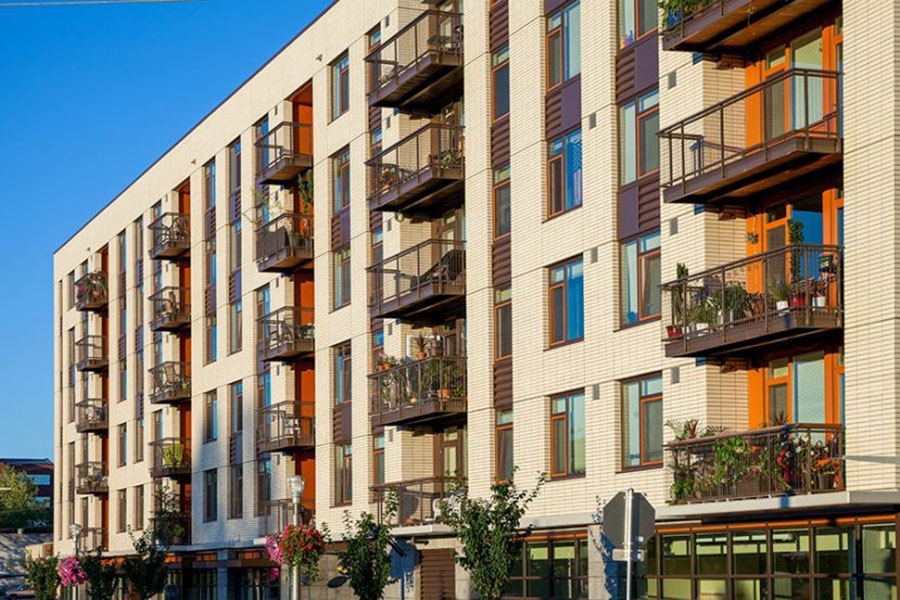Ultimately addressing housing affordability will depend on a market-based solution.
In early 2016 Portland experienced some of the highest levels of rent inflation of any market in the U.S. According to real estate analytics firm Zillow, average rents in Portland increased almost 15% between the second quarter of 2015 and the second quarter of 2016.
The rapid escalation in rents is a real crisis for many households, and has fueled widespread calls for actions to limit rents, prohibit no-cause evictions and require developers to build subsidized housing.
The City of Portland has taken some important steps to address the affordability problem, notably dedicating as much as 40% of the money from tax increment financing in its urban renewal zones to pay for affordable housing. And in November, Portland voters passed a $258 million bond measure that will help subsidize the construction and renovation of thousands more units of affordable housing.
But these measures will take time to address the problem. And more importantly, it’s never been the case that the public sector has been able to build enough low and moderate income housing to meet the demand.
Ultimately addressing housing affordability will depend on a market-based solution. As a result, understanding the market factors behind rising rents is key to solving this problem.
It’s tempting to caricature rising rents as a kind of morality play, the result of a sudden up-tick in greed by landlords and developers. But the truth is the underlying problem has everything to do with supply and demand.
In short, what we’ve seen in Portland — and in cities across the country — is a sharply growing demand for urban living. More and more Americans, especially well-educated young adults, are moving to diverse, interesting walkable urban neighborhoods, and pushing up the demand for housing in these locations.
And a key problem is that there’s what economists call a “temporal mismatch” between this demand and housing supply. While demand can change rapidly, it takes time—typically years—to design, permit, build and lease new apartments. Until supply catches up, more demand produces higher rents.
The good news is that supply is responding to demand. There’s been a dramatic increase in housing construction in Portland, especially in the close-in urban neighborhoods that have become so popular. After hitting a low of less than 1,000 units permitted in 2010, the city issued permits for 4,500 units last year, more than 80 percent of them multi-family structures.
Already, the growth of inventory is having an effect on rental increases. Again, according to Zillow, rental price inflation in Portland fell to 3 percent year over year in November of 2016.
And more relief is likely on the way. Developers have filed building permits to construct nearly 25,000 more apartments in the Portland area, according to the local Barry Apartment Report that tracks these data. As these units are built, they’ll alleviate the shortages that have driven up rents. The same scenario has played out in other real estate markets where the economic cycle is running ahead of Portland. There’s a growing body of evidence that as more housing gets built, rent inflation moderates, and rents even decline.
Nationally, Axiometrics sees a slow down in rental growth, with actual declines in some markets. In Houston, New York and the San Francisco Bay, growing inventories have produced “negative rent growth.” Last month the Chicago Tribune reported that while rents were up about 2.3% citywide, they were down about 0.3% inside “The Loop.”
The New York Times even floated the notion that 2017 will be “The Year of the Renter” as growing supply takes the edge of rent increases in New York.
Whether this market-driven solution will actually play out, however, depends critically on public policy. Unfortunately, the City of Portland in December enacted a new inclusionary housing requirement that forces developers to set aside 10% to 20% of newly constructed apartments for low and moderate income families.
Forcing developers to include discounted apartments in new buildings will drive up their costs, and will make some new projects financially infeasible. Investors will likely take their funds to other markets with better returns. Once the big backlog of permits filed to beat the deadline for the new requirement is exhausted, the supply of new rental housing in Portland is likely to slow to a trickle, with predictable effects on rents.
Now moves are afoot in the Oregon Legislature to repeal the state’s ban on rent control. While it is a politically appealing tactic, rent control treats the symptom and does nothing to address the underlying problem. The historical evidence shows that rent control inevitably shrinks the supply of rental housing, and tends to lock households into rent-controlled units. It’s the reason that nearly all economists oppose rent control policies.
Rising rents are a real problem. But solving this problem requires realizing that rents are rising not because of some epidemic of greed, but because more people want to live here than we have space for. Unless we increase housing supply, especially by building more apartments in urban neighborhoods where people want to live, the rental problem won’t go away, it will only metastasize.
Joe Cortright is an economist and principal of Impresa Consulting.




